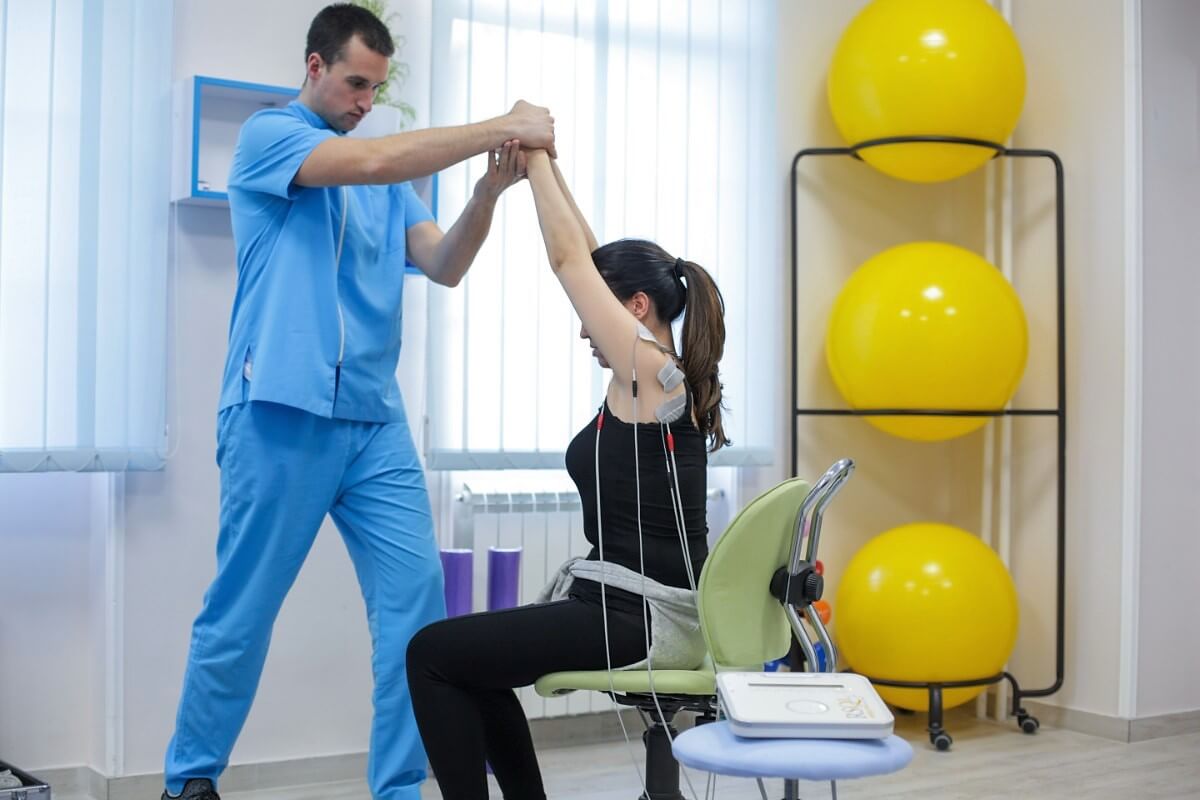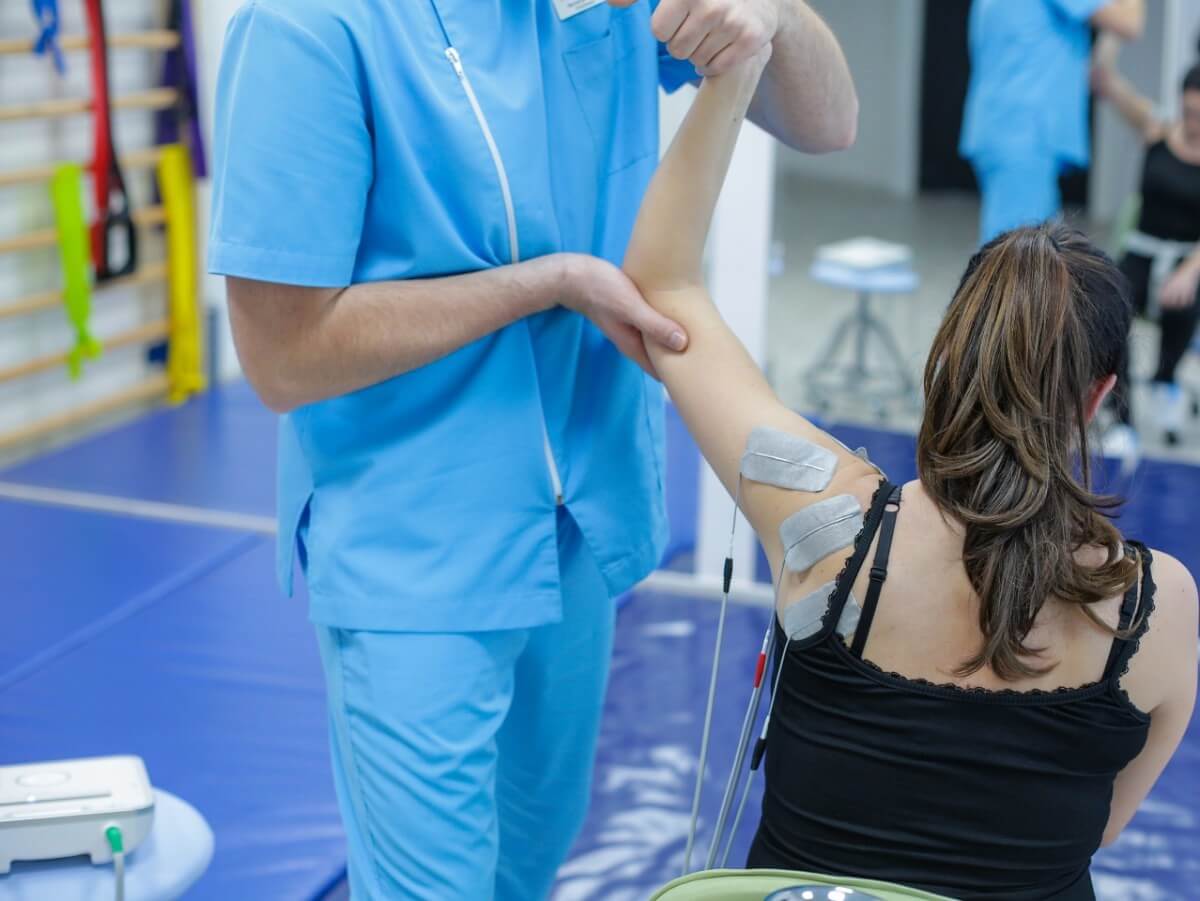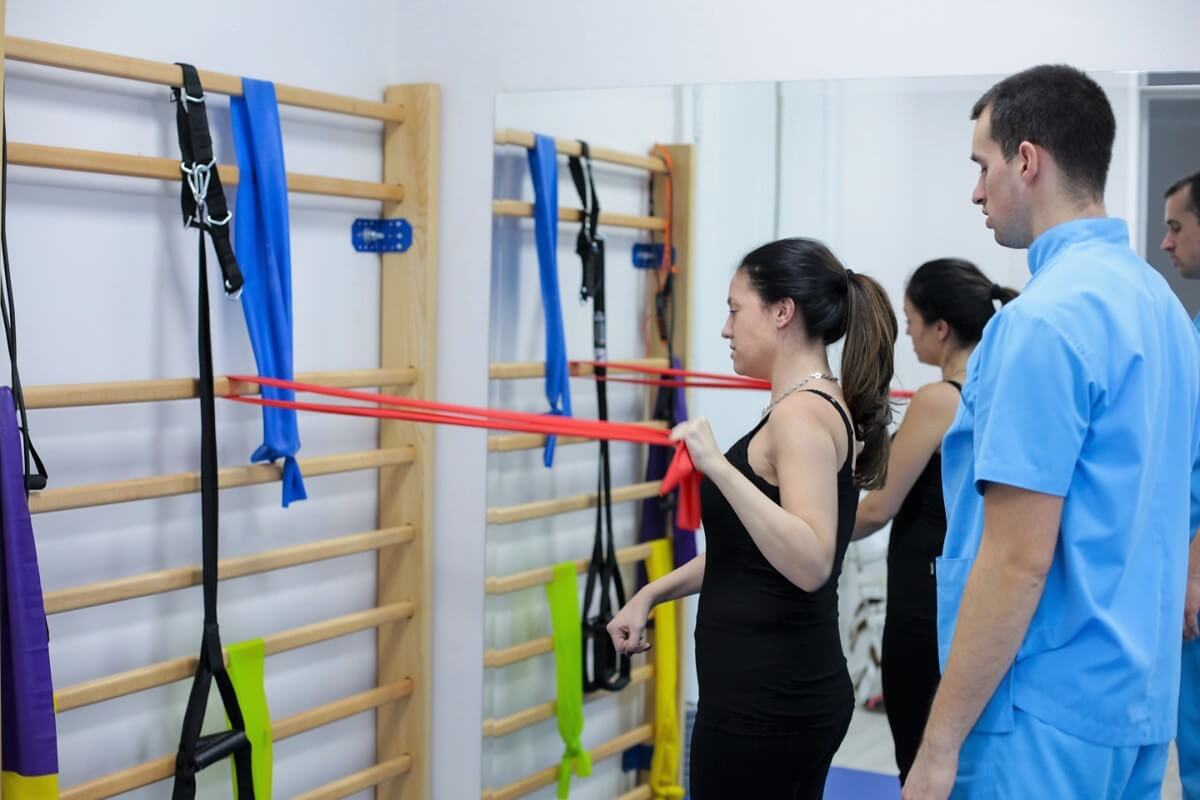Welcome to the third BLOG of the Fizionova Physiotherapy Center!
Our chief therapist Nemanja Marjanović will take you through another interesting topic as well and briefly explain everything related to the frozen shoulder syndrome.
What is a frozen shoulder?
A frozen shoulder is an injury, that is, a syndrome with which there is stiffness and pain in the shoulder. Limited mobility of the shoulder joint occurs, which greatly complicates a person's daily activities. In professional literature, frozen shoulder syndrome is often referred to as secondary adhesive capsulitis or peri arthritis humeroscapularis.
Here’s a video with preventive exercises and explanation of therapy in our Center
U videu možete pogledati kako funkcionišu prednji ukršteni ligamenti, kako povreda nastaje, koje preventivne vežbe možete raditi kako biste se sačuvali i kako izgleda proces lečenja u našem centru.
In the video, you can find answers to all the important questions related to the frozen shoulder syndrome and what the treatment process in our Center looks like.
Frozen shoulder syndrome most often afflicts people between the ages of 40 and 60, and it’s slightly more common in women.


The shoulder joint is made up of four bones: the upper arm, the shoulder blades, the collarbone and the sternum.
The shoulder joint itself is wrapped in a joint capsule. The joint capsule is a connective tissue that maintains the joint stability and protects the shoulder from external influences.
There is synovial fluid in the joint capsule whose task is to lubricate the shoulder joint during movement. With reduced secretion of this fluid, there is an increased friction of the periarticular tissue and as a consequence, the tissue itself changes. Then the tissue becomes rigid, loses its elasticity, and changes the structure from connective to fibrous tissue.
In frozen shoulder syndrome, foreign connective tissue forms inside and on the joint capsule itself. Those new tissue growths are rigid and inelastic. These growths take up space inside the joint capsule reducing the mobility of the joint itself and this is why the shoulder joint freezes. These changes and inflammations often affect the surrounding tissues (tendons, ligaments, muscles…).

Why does shoulder pain occur?
The pain is caused by a strong inflammatory reaction that occurs in the shoulder joint due to freezing. Inflammation of the joint capsule and the mentioned surrounding tissues also occurs very often.
Frozen shoulder syndrome develops through 3 stages:
1. freezing process
2. condition of frozen shoulder
3. healing and “thawing” process
The specific cause of this syndrome is still unknown.
What are the most common causes of the syndrome?
Practical experience has shown that frozen shoulder syndrome occurs due to some conditions or injuries of the shoulder from which the patient already suffers (these are very often various injuries of the shoulder itself, rotator cuff injuries or inflammation of the tendons of the shoulder itself).
An increased risk of developing this syndrome has also been observed in patients whose hand, forearm, upper arm or shoulder have been immobilized for a long time due to surgery or fracture. The reason is that this is when we have to protect the shoulder and control its mobility.
How to recognize frozen shoulder syndrome?
The first definite sign of a frozen shoulder is the appearance of intense shoulder pain. The pain usually intensifies while performing the movement and progressively increases through the stages of freezing of the shoulders. Often in the first phase, that is, the phase of the syndrome’s development, people disregard this pain.
The second phase is characterized by particularly pronounced pain during the night. After that, there is a notably greater increase in shoulder stiffness, which is accompanied by a significant reduction in the ability to move. At that stage, the patient's daily activities such as brushing teeth, dressing, carrying objects are already quite difficult…
What do you need to do if an injury, i.e., shoulder freezing happens?
If you are experiencing all these symptoms, it is necessary to seek professional help as soon as possible.
A very important note – with this syndrome, that is, injury, we must not delay the visit to the physiotherapy center and the recovery, because if you delay solving the problem for a longer period and do not start therapy on time, there is a reduction in the volume of the shoulder joint.
That is why it is extremely important to react as soon as possible!

We will share with you some preventive exercises, which you can watch in the video:
- exercise 1 – separation of the elbow from the body
- exercise 2 - pulling the forearm to the side
- exercise 3 - raising the arm
- exercise 4 - arm rotation
- exercise 5 - pulling an elastic band
- exercise 6 - static pushing

What does the recovery and treatment of frozen shoulder syndrome look like in our Center?
In the Fizionova Center, based on a diagnostic examination (soft tissue ultrasound or magnetic resonance), with standardized examinations and tests that we perform, we determine the degree of damage and based on that, further therapeutic procedure is determined.
In our center, this injury is treated by Protocol number 5, which includes:
- Cryotherapy, which is the basis and an intro to other therapeutic procedures, because we use it to reduce the inflammatory process and lower the temperature in the joint.
- RSQ1 treatment for which we are unique in the Balkans and which is extremely important for this type of problem, because it speeds recovery (21 minutes with this device replaces an hour and a half of standard therapy) and is combined with a specific medication that reduces elements of inflammation and it acts to increase the amplitude of the movement.
- After that, there is a combined therapy where electrotherapy and ultrasound are included, and so we create sonophoresis and at the same time deposit a gel that has an MSM component and also acts to reduce inflammation.
- The next procedure that is applied is a high-frequency magnet - Salus Talent, where we make a magnetophoresis and imprint the previously added gel deeper, and thus with the help of magnetic induction we achieve penetration that is resorbed over 10 cm.
- Another very important element in that therapeutic procedure, in the final phase, is the hypobaric therapy that is applied via suction cups
It is also important to note that the exercises shown in the video, as well as the additional rehabilitation exercises conducted during the therapy process, must be done at home on your own, even after the recovery is completed. This maintains shoulder functionality and full range of motion.


SCHEDULE A PHYSIATRIST'S EXAMINATION
Dr Jelena Kluz-Đurđević, a specialist in physical medicine
After a conversation with the patient, Dr. Jelena will conduct an examination to obtain a more comprehensive view of your health status, helping to determine whether it's an injury or a diagnosis.
The examination lasts for 30 minutes and includes:
Schedule a specialist examination by calling 011 2100 588 for the cost of 4,000 RSD.
